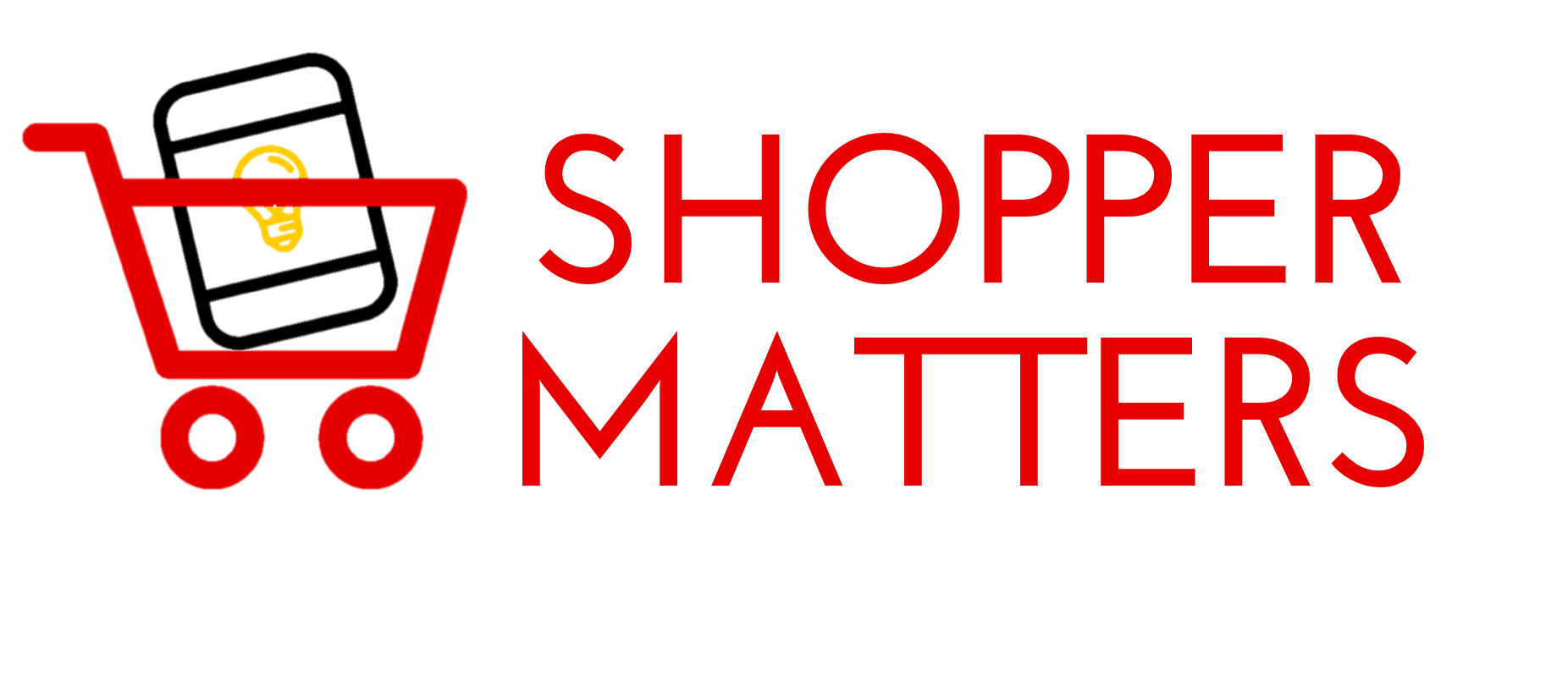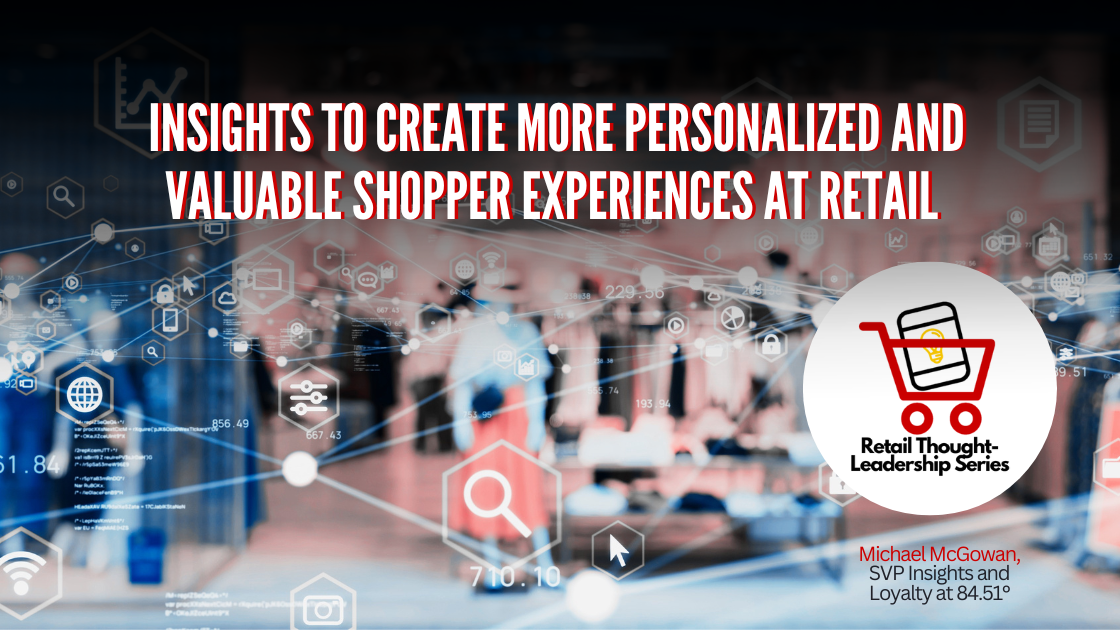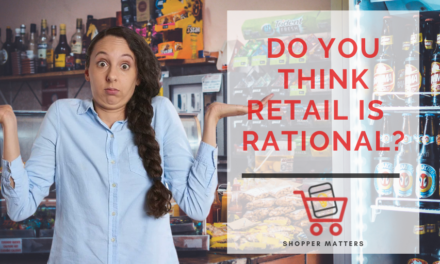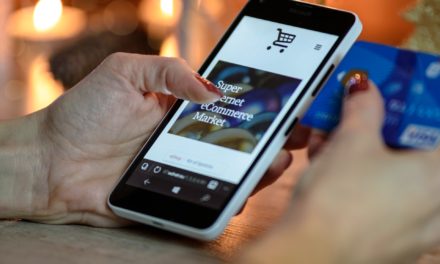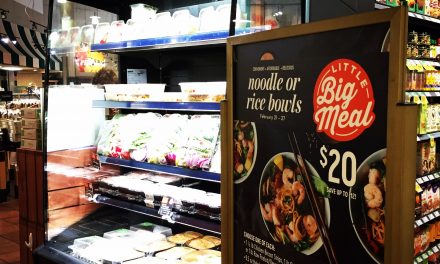INSIGHTS to create more personalized and valuable
SHOPPER experiences at retail
Wisdom can be hard to come by, and retail wisdom is an even more precious resource. Engaging with industry experts is necessary to up your retail wisdom, which is what the Shopper Matters Retail Thought Leadership Series explores. Our Managing Editor, Michael La Kier, recently sat down with Michael McGowan, Senior Vice President of Insights and Loyalty at 84.51° for a wide-ranging conversation about today’s evolving retail landscape. While the discussion took place at Groceryshop, the learnings and insights about innovation, customer experience, retail media, and personalization are relevant well beyond the event.
Michael McGowan has nearly two decades of retail experience on the client, retailer, and supplier side of the industry. Michael’s expertise covers merchandising analytics, data insights, loyalty, and partnerships. Currently, he plays a key leadership role in many of the data and capability partnerships and new ventures to help grow and expand the footprint of 84.51° in the marketplace.
Editor’s Note: This interview was edited for clarity and length.
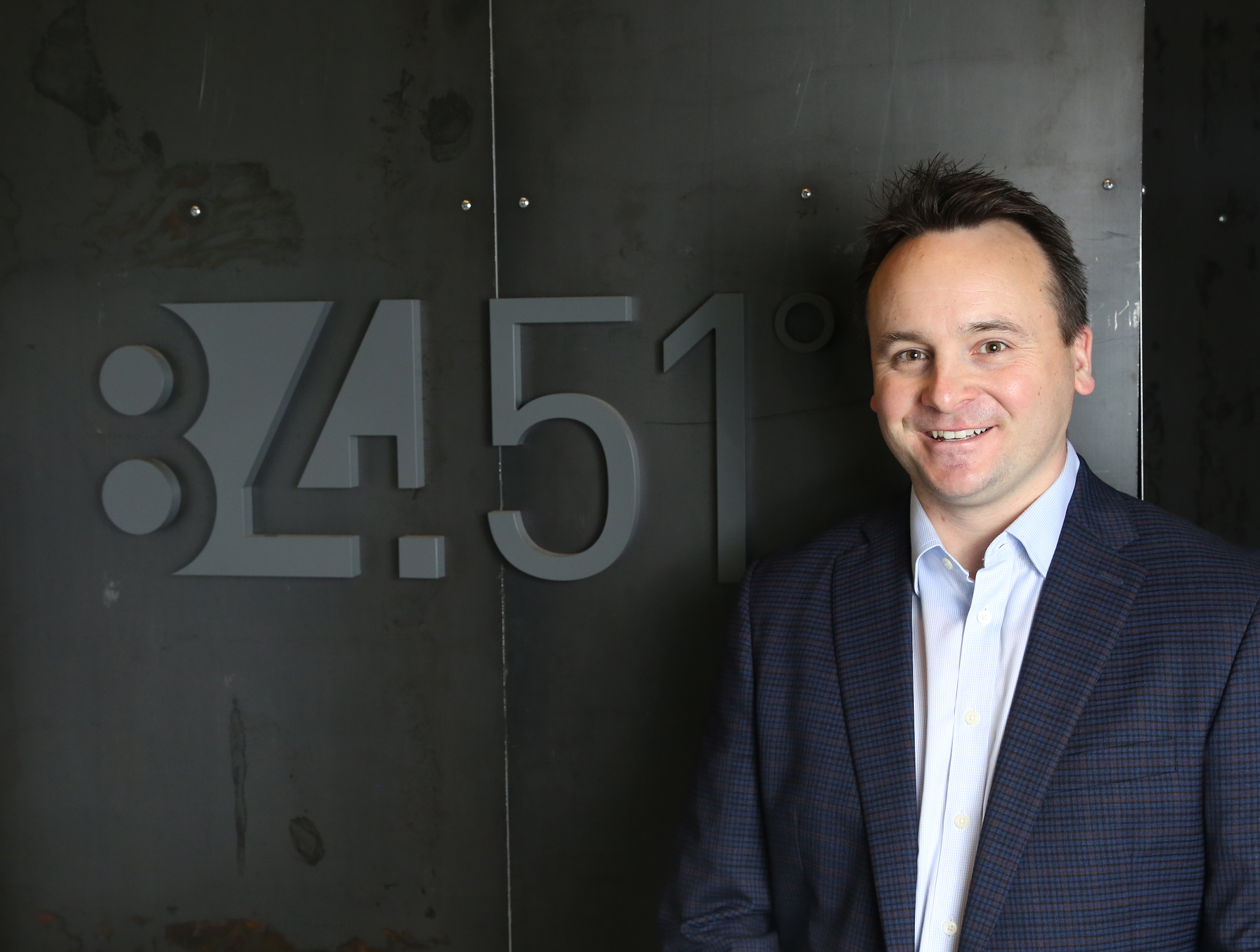
Improving Retail Experiences
Michael La Kier
In the retail industry, there is a lot of discussion and conversation about convenience and reducing friction for the shopper. Based on your experience, what are some of the critical takeaways around this area?
Michael McGowan
The chief merchant from Albertsons talked about experience having two dimensions. One is inspiration. And the other is ease. “Ease” is just another word for convenience, right? When we talk about experience, there’s probably a couple of different layers, but taking the friction out of the process, and meeting the customer on their terms, anytime, anywhere is table stakes now.
Transformation in the Retail Industry
Michael La Kier
That makes a lot of sense, which is the vision for many in retail. But who in the industry is doing it well overall versus bits and pieces?
Michael McGowan
Grocery retail is going through a huge transformation. You need to prioritize as you can’t do everything all at once. You need to develop an ecosystem of partners. And, that’s one thing I’m really proud of the industry for. Five years ago, I was on a panel about innovation, and they were all very proud of the innovation they did inside their own four walls. And then, shortly thereafter, things started to change.
The retailers that are going to be successful are the ones that have an ecosystem of partners. Number one, I can get new capabilities out there quickly for my customers. And two, I’ll probably get them out there better and more reliably to actually meet customer expectations. It doesn’t mean you have to keep that partner; you can decide to build something yourself, or you can buy that partner. But, it’s best if you have a partner ecosystem and a strategy around that.
The pace of change has really helped cure the “not invented here syndrome” to some extent. A partner ecosystem helps; why should you spend money in development if somebody else has already? Now, the one thing you need to think about is ‘what happens if one of my partners gets bought by one of my competitors?’
Michael La Kier
So, that’s the risk of the partnership model. You don’t have to build everything yourself, especially in a capital-intensive business with small margins.
Michael McGowan
In grocery, in all of retail, you can’t just invest in technology; then be done. It doesn’t work that way. I haven’t asked enough retailers the question, “Do you realize this is the new norm?”
The Growth of Retail Media
Michael La Kier
Let’s shift to talk about retail media. There’s lots of conversation around retail media and how wonderful it is because it adds margin. One large retailer talked onstage at Groceryshop about a goal to triple their business. What’s your take on the growth of retail media?
Michael McGowan
All grocery stores are looking for ways to create alternative revenue streams. And whether they’ll admit it or not, a lot of these grocery executives (when they have a glass of wine) ask what happens if grocery becomes a zero-margin business. And, we’ve even seen that. When one big discounter came into the US, two established grocers matched them on price, and two didn’t. The two that matched actually took market share, but there was never any recovery on margin.
So that’s the backdrop on why I think they’re doing this. They’re all looking for ways to create alternative revenue streams. Now, when it comes to media. We’d like to talk about a great experience that can give me personalized offers. But if you give me a personalized offer every day for the next 50 years in my inbox when I don’t actually need it, you’re just going to piss me off. So part of this comes down to how you create contextually relevant content, marketing, promotions, and offers to me so that it hits at the right time.
It’s a balancing act. If you just give me personalized offers, and that’s all I get, it’s gonna be a pretty boring life. So how do you give me all the things that are new and can push into new areas that I may like without giving me stuff that I don’t need? And that’s the piece most retailers need to work through.
Whether it’s in the store, whether it’s at home, or at work, we talk about experiences, personalized offers, and content, taking friction out of the process, and meeting the customer where and how they want to be served. How do retailers get down to the Segment of One? How do you get to know me to the point where retailers know what kind of experience I want? I know it’s a little cliche because we’ve been working on personalization, and people have said that forever, but that’s THE thing. What’s different is that technology moves faster, and we can do more things now.
E-Commerce, Personalization, and Bobby Flay
Michael La Kier
There seems to be an almost boomerang effect of e-commerce, e-commerce, e-commerce. First it’s growing then it’s slowing down. How do we bring more technology, or that experience people have enjoyed in terms of customization and personalization, and get it in-store? Is that an achievable goal?
Michael McGowan
Bringing personalization into the e-commerce piece, I actually think it’s kind of lumpy. And, I think what you see is that the customer now isn’t wed to one channel (and I hate the word channel). If they want to go to the store, they want to go to the store. They may feel like “COVID is picking back up my area, and I want to start to get back into my digital channels.” So that’s what retailers need to understand: the customer will now not be in one lane and stay in one lane only. Shoppers want the ability to move back and forth.
The in-store piece is important. And I think there are ways to use technology in the store that we haven’t thought about yet. Some companies have played with that, like how can you track and find dwel time in front of a specific category, and then they can add a media buy to change our mind. So, there’s things like that.
And, wouldn’t it be great if they knew I had a bad day at work and could get something to feed the kids that night, and I just want to get in and out? Versus when it’s my wife’s 50th birthday and I’m going to cook a big meal because that’s what I like to do. And since Bobby Flay inspires me, could they put things on the shelf that kind of remind me of Bobby Flay and the things he cooks, like his pomegranate molasses? (It’s fantastic. It’s fantastic.)
So there’s a lot more we can do in the stores. But, the question is about return on investment. All technology comes down to cost. To make it work, you need to have enough data to create a truly personalized experience for me, and then you need a way to recognize me when I walk into the store.
I walked into Groceryshop thinking that mobile was kind of standalone. It’s kind of distinct. But the way my panelists talked today, it’s kind of a thinner connection. It’s almost the glue that holds the different channels together. And we’ve been saying that for a while. The channels are really converging. You may start your journey in one place and end up in another. It’s pretty interesting to ask, “how do you actually use mobile to connect with the different channels?”
A BIG thanks to Michael McGowan for spending time with the Shopper Matters team. Look for more retail wisdom and insights from the Shopper Matters Retail Thought Leadership Series soon.
